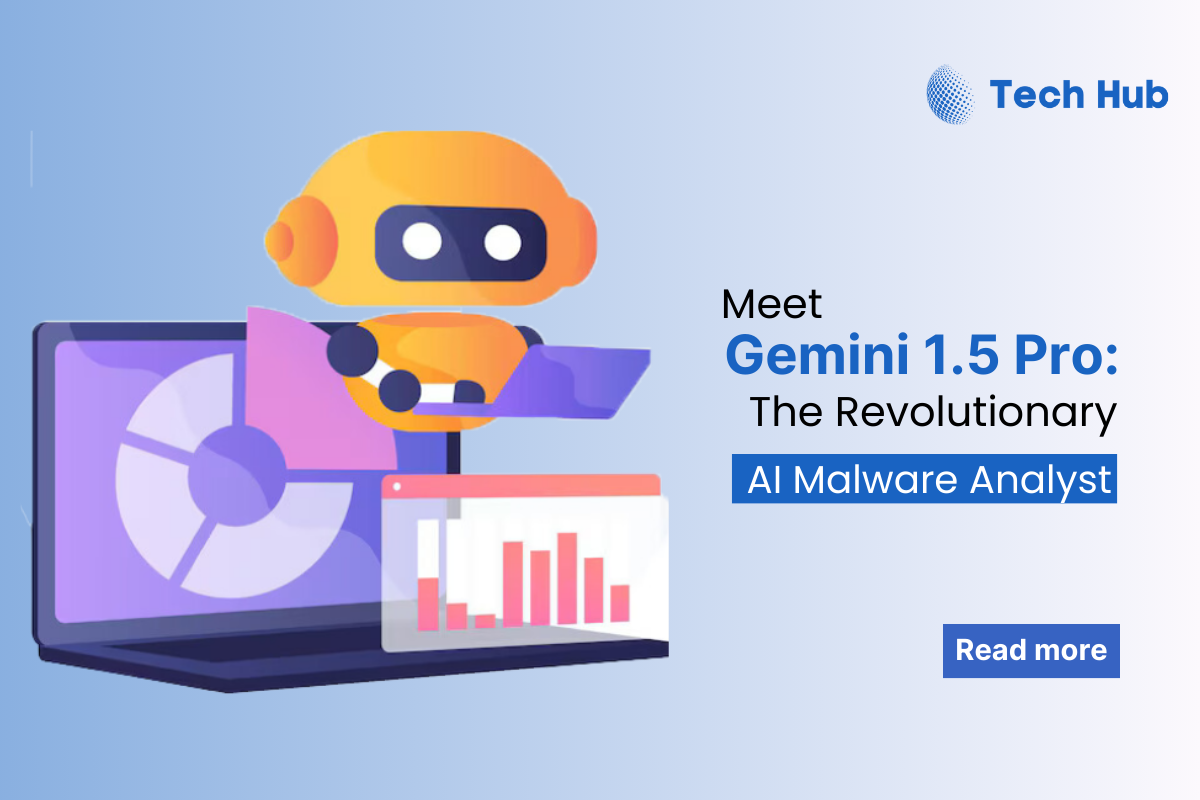Approaching malware analysis in a revolutionary new way, Google is ready to become the discourse changer and turn things upside down with their profound invention. Step in Gemini 1.5 Pro, a super sophisticated AI program that utilizes the next-level AI technology to make a total automation of malware study, especially reverse engineering. Thanks to the capability to process bids that are as long as 1 million tokens, Gemini 1.5 Pro is now more than capable of taking care of the pipeline of a big automatic analysis and thus getting the job of inspecting highly complex samples of malware all done.

“By analyzing the entire code at once, Gemini 1.5 Pro gains a comprehensive understanding of the malware, allowing for more accurate and comprehensive analysis,” explained John Smith, Lead Researcher on the Gemini project at Google.
Gemini 1.5 Pro capabilities go beyond common recognition of the patterns or the type of the class by machine learning. It borrows the complex code deciphering skill to interpret the thought behind the malware in the way a malware analyst would make the conclusion. This approach offers the tool an opportunity to look for malicious features which might also be used for developing new attacks; it helps to spot them in unfamiliar threads as well.
One of the major benefits of Gemini 1.5 Pro is that it can create detailed reports ending in languages understood by humans, that clarify the malware potential impacts as well as the way it would use to infiltrate a system. This aspect ensures no delay in the process of the analysis, giving cybersecurity experts enough time to comprehend the nature of cyberattack and determine effective countermeasures.
In a stunning manifestation of its abilities, the Gemini 1.5 Pro securely located a pool zero threat that no antivirus systems and sandboxes of VirusTotal could detect. The “medui.exe” file was decompiled in order to analyze its code, and this led to the tool finding the harmful attributes of the given file and successfully label it as malicious within 27 seconds straight.
They established that the malware’s primary objective was to intercept and alter cryptocurrency transactions while also evading detection by terminating antivirus software. This case demonstrates that Gemini 1.5 Pro can go beyond the simple pattern recognition in addition to the utilization of its enormous understanding of the code behavior to identify intents of malicious behavior, even when they are new.
Although the classic malware analysis methods are effective, they do demand meticulous manual activity and high-level expertise. Automation is the key milestone in Gemini 1.5 Pro that overcomes the problem of its scalability and time efficiency with respect to the malware analysis challenges.
Still, with every new technology, we must remember that the new version of Gemini 1.5 Pro has its own problems like dealing with malware obfuscation tech, growing binary size, and changing ways of attack. To overcome these difficulties and make sure that automated malware analysis is always efficient, the improvement of generative AI models and preprocessing techniques will be imperative.
Gemini 1.5 Pro symbolizes a new era in cybersecurity, testifying the viability of generative AI as an effective malware analysis tool and providing the glimpse on how AI can effectively fight against complex cyber threats. As the cybersecurity landscape keeps changing, innovations such as Gemini 1.5 Pro will undoubtedly become instrumental in preventing cybercriminals from having an upper hand through continual evolution in security trends and ensuring the digital environment stays safe.
